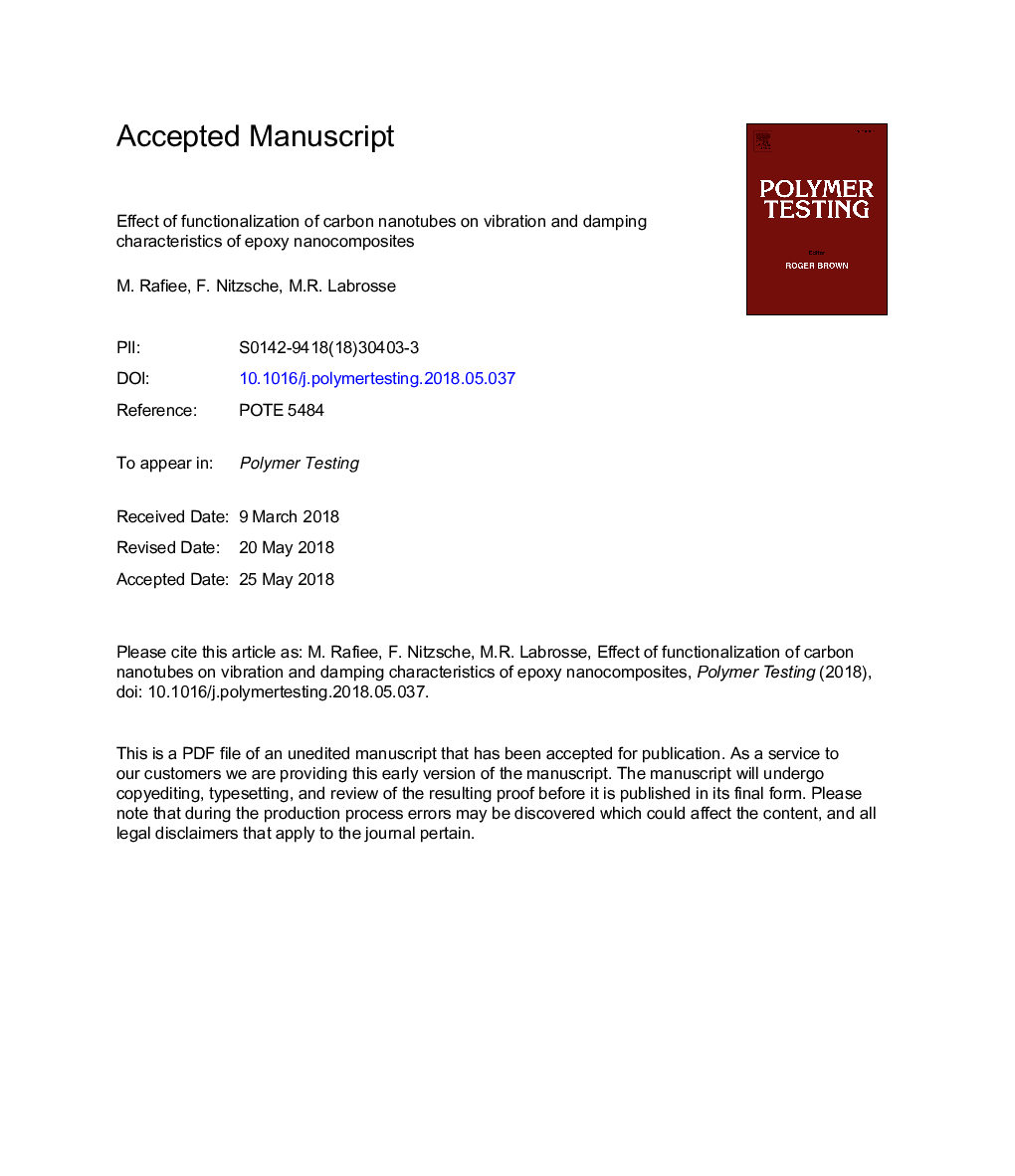| کد مقاله | کد نشریه | سال انتشار | مقاله انگلیسی | نسخه تمام متن |
|---|---|---|---|---|
| 7824789 | 1502921 | 2018 | 41 صفحه PDF | دانلود رایگان |
عنوان انگلیسی مقاله ISI
Effect of functionalization of carbon nanotubes on vibration and damping characteristics of epoxy nanocomposites
ترجمه فارسی عنوان
اثر کارکرد نانولوله های کربنی بر ویژگی های ارتعاش و خمش نانوکامپوزیت اپوکسی
دانلود مقاله + سفارش ترجمه
دانلود مقاله ISI انگلیسی
رایگان برای ایرانیان
کلمات کلیدی
موضوعات مرتبط
مهندسی و علوم پایه
شیمی
شیمی آلی
چکیده انگلیسی
The vibration and damping characteristics of epoxy composites reinforced by pristine and functionalized multi-walled carbon nanotubes (MWCNTs) were investigated experimentally for potential use as integral passive damping elements in structural composite applications. The MWCNTs were introduced into the acetone solvent and then mixed with epoxy resin through a sonication process and mechanical stirring. The solvent was evaporated from the mixture by means of magnetic hot plate and the hardener was added once it was cooled down to room temperature. The MWCMTs/epoxy mixture was then injected into a mold to form the nanocomposite specimens. Nanocomposite specimens were fabricated for six different MWCNT loadings (0.02, 0.041, 0.061, 0.123, 0.25 and 0.37â¯wt%). Microstructural analysis, tensile and bending tests were carried out to examine the effect of pristine multi-walled carbon nanotubes (p-MWCNTs) and functionalized multi-walled carbon nanotubes (f-MWCNTs). The frequency response functions (FRFs), coherence and phase diagrams of nanocomposites were measured using a forced vibration technique. A periodic up-chirp signal was generated by a shaker to excite the cantilever nanocomposite specimen at the base. The damped natural frequencies and damping ratios were obtained for different loadings of MWCNTs. The experimental results indicated that the damped natural frequencies of p-MWCNTs/epoxy and f-MWCNTs/epoxy composites increased by adding MWCNTs up to 0.12â¯wt.%, and decreased at higher MWCNTs content. Addition of p-MWCNTs were improved the damping ratio of nanocomposites. While the damping ratios from f-MWCNTs at loadings of 0.02-0.06â¯wt.% were higher than those from p-MWCNTs, they did not increase at higher CNTs contents for the first mode of vibration.
ناشر
Database: Elsevier - ScienceDirect (ساینس دایرکت)
Journal: Polymer Testing - Volume 69, August 2018, Pages 385-395
Journal: Polymer Testing - Volume 69, August 2018, Pages 385-395
نویسندگان
M. Rafiee, F. Nitzsche, M.R. Labrosse,
